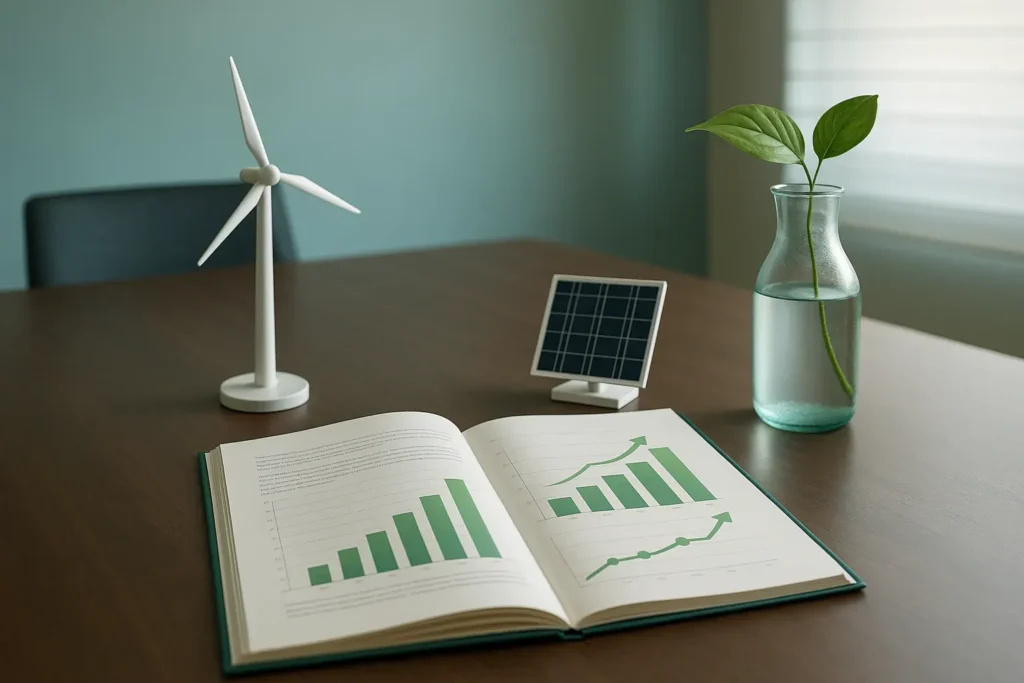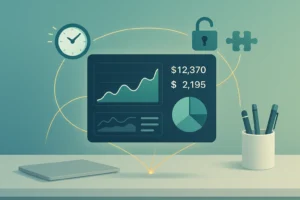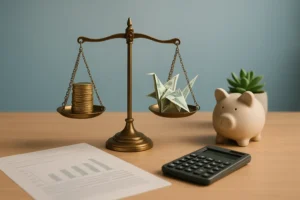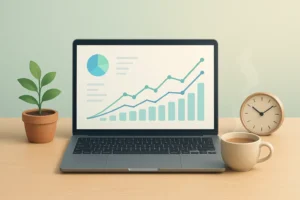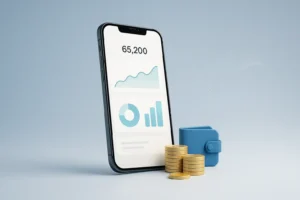Leading investors reveal how sustainability initiatives transform from cost centers into powerful profit drivers across multiple sectors. Expert testimonials demonstrate how metrics-based approaches to environmental responsibility have measurably increased sales, reduced waste, and created distinctive market advantages. These real-world success stories provide a practical roadmap for businesses seeking to enhance both financial performance and environmental impact.
- Sustainability as Strategic Advantage for Startups
- Pilot Program Turned Sustainability Into Brand Strength
- Frame Sustainability as Smart Business Move
- Quality Insulation Adds Both Environmental and Financial Value
- Revitalizing Properties Through Energy Efficient Rehabilitation
- Digital Transformation Cut Waste and Boosted Profits
- Green Data Centers Create Competitive Edge
- CO2 Metrics Drove Performance and Sales
Sustainability as Strategic Advantage for Startups
As a VC scout, managing consultant, and founder, I have had the opportunity to work closely with both startups and investors. One particular instance where I used my influence to advocate for more sustainable practices was during the fundraising stage of a promising early-stage startup in the food tech industry. The company had an innovative product with strong growth potential, but its initial operations plan did not fully address sustainability concerns. From packaging choices to supply chain design, there were areas that could be improved to reduce environmental impact without compromising profitability.
I encouraged both the founding team and potential investors to view sustainability not as a cost but as a differentiator. With consumer demand increasingly shifting toward environmentally responsible brands, aligning early with sustainable practices would not only attract customers but also appeal to impact-focused investors. I highlighted case studies of startups that had integrated eco-friendly models early and later saw significant long-term gains both in valuation and brand loyalty.
The response was highly positive. The founders, initially hesitant due to cost concerns, recognized that sustainable alternatives could actually streamline certain operations and create marketing advantages. Investors also welcomed this perspective because it aligned with their growing focus on ESG principles. The startup eventually adopted a revised operations plan that integrated sustainable packaging and optimized sourcing, which later became a core part of their pitch narrative and strengthened their investor appeal.
This experience reinforced the importance of advocacy. Sometimes founders are too focused on immediate growth metrics and investors are narrowly evaluating financial upside. Acting as a bridge between these perspectives allowed me to show that sustainability is not a distraction but a driver of long-term success.
I would suggest that weaving sustainability into business fundamentals early on is not just ethical, it is strategic. It strengthens investor confidence, builds brand credibility, and ensures resilience in a market where responsibility and profitability increasingly go hand in hand.

Pilot Program Turned Sustainability Into Brand Strength
A few years ago, I invested in a hospitality group that was doing really well financially but had huge waste streams, especially single-use plastics and energy consumption. Rather than just pushing for cost savings, I used my role as an investor to encourage them to rethink how sustainability could actually strengthen their brand and margins.
We started small. I asked the leadership team to run a pilot program at one of their busiest properties, replacing single-use plastics with biodegradable alternatives and upgrading to energy-efficient lighting. I also pushed for them to share the story with guests, framing it as part of the experience rather than just an operational change.
The results surprised even the skeptics. Within six months, costs dropped because of reduced waste hauling, and guest surveys showed higher satisfaction scores tied directly to the sustainability efforts. One guest even said they chose the property over a competitor because of its environmental practices. That moment really showed the team how sustainability wasn’t just a feel-good add-on, but a competitive advantage.
The response from management was a complete shift. What started as “something we’ll test” turned into a core part of their growth strategy, and they ended up rolling the practices out across all their locations. For me, it reinforced the power of influence; investors can do more than ask about returns. We can shape the values that drive long-term success.

Frame Sustainability as Smart Business Move
I mostly work on operations at Advanced Clean Air, but I’ve also put money into a few small businesses in the home improvement and energy sectors. I used that influence to promote sustainability with a supplier we worked with that made HVAC parts. I told them to change how they recycle metal waste to make it more efficient and to switch some of their fleet to hybrid vehicles.
Instead of forcing them to do it, I framed it as a way to save money in the long run and improve their public image. The response was overwhelmingly positive. When they crunched the numbers, they saw that it wasn’t just good for the planet; it was also good for business. Within a year, they reported that their waste and fuel costs had decreased.
The main point was that sustainability works better when it’s seen as a smart business move instead of just a moral one. By linking environmental responsibility to profitability, investors can make a real difference.

Quality Insulation Adds Both Environmental and Financial Value
One way I’ve used my influence is by steering our renovations of distressed homes toward long-term sustainability instead of quick cosmetic fixes. For instance, on a Baltimore rowhouse we invested in upgraded insulation and high-efficiency windows rather than just repainting and patching. The upfront costs were higher, but the buyer ended up highlighting the lower utility bills when they resold, which confirmed that making a property truly sustainable adds both community value and financial value.

Revitalizing Properties Through Energy Efficient Rehabilitation
As an investor in real estate-secured notes, I’ve had opportunities to advocate for practices that indirectly support sustainability. For example, I sometimes purchase notes on properties that are older or in disrepair. Rather than letting those properties sit vacant and deteriorate further, I work with the note-holders or subsequent buyers to facilitate rehabilitation, which often includes modernizing them to be more energy-efficient. One instance involved a note on a commercial building that had fallen into disuse; by stabilizing its ownership and encouraging its redevelopment, the property was transformed into a multi-tenant space with updated insulation and HVAC, breathing new life into an existing structure rather than contributing to new construction sprawl.

Digital Transformation Cut Waste and Boosted Profits
I was VP at Garden City, a PE firm managing $250M+ in service businesses, and I consistently pushed our portfolio companies toward operational efficiency that naturally reduced waste and resource consumption.
One standout example was with a janitorial company where I advocated for digital route optimization and automated scheduling systems instead of their paper-based dispatch. Management initially resisted, claiming “our crews aren’t tech-savvy” and worried about implementation costs.
The results spoke louder than objections — we cut fuel costs by 28% through optimized routing, eliminated thousands of paper work orders monthly, and reduced overtime by 22% due to better scheduling. The company’s EBITDA improved significantly, making it more attractive for exit.
I’ve seen this pattern repeatedly. When we eliminated manual processes for Valley Janitorial, they didn’t just save 70% of the owner’s time — they also drastically reduced paper waste, fuel consumption from redundant trips, and energy costs from inefficient operations. Sustainable practices aren’t just good ethics; they’re directly tied to profitability in service businesses.

Green Data Centers Create Competitive Edge
When investing in AI-focused startups as a founder and academic, I’ve been able to act as an early voice in the development of green cloud infrastructure. My advice to companies is to commit to renewable-powered data centers, even if it means a slight increase in cost.
In one case, the company I was working with was hesitant at first. Mainly because they worried about margins, but I encouraged them, and proved to them by running the numbers that sustainability is not just the right thing to do.
Well-known as European clients began asking about carbon footprints in RFPs, the company’s commitment to green data centers has won them a definite competitive edge.

CO2 Metrics Drove Performance and Sales
I pushed this as an angel in a digital-pathology startup: make “grams CO2e per slide” a ship/no-ship metric in CI and a line in the board pack. We helped them quantize models, run inference at the lab edge, tighten storage retention, and schedule training jobs in low-carbon windows. In 90 days they cut GPU hours/slide by ~32%, cloud egress by 18%, and the bill by ~14% — and started winning hospital RFP points on sustainability. Engineers liked it because it also made the product faster; finance liked the lower spend.


